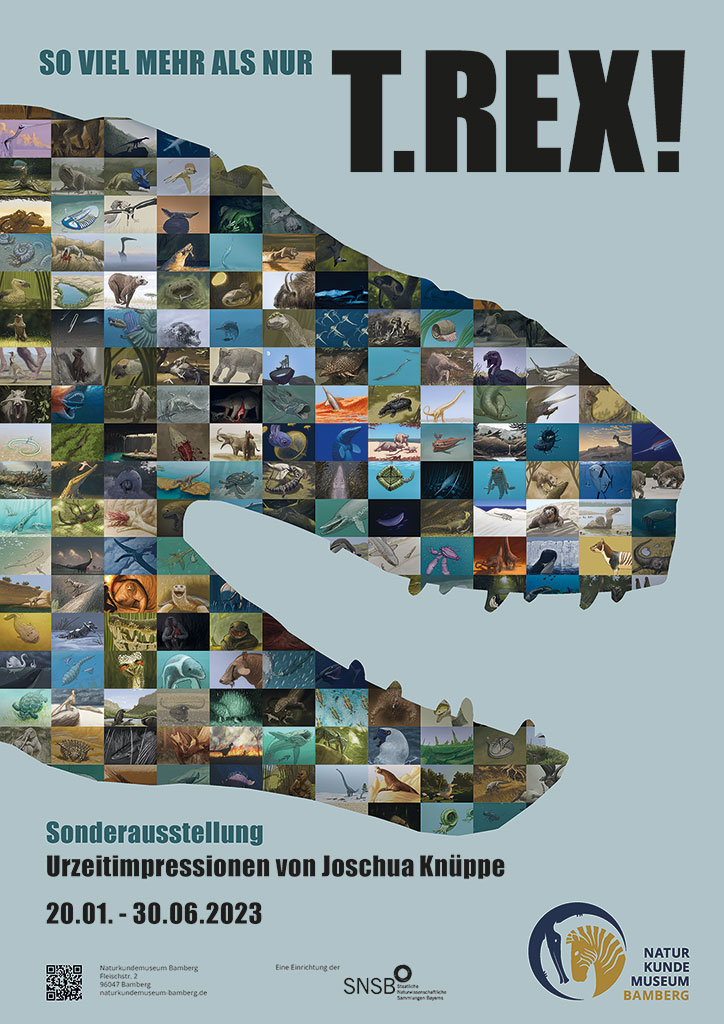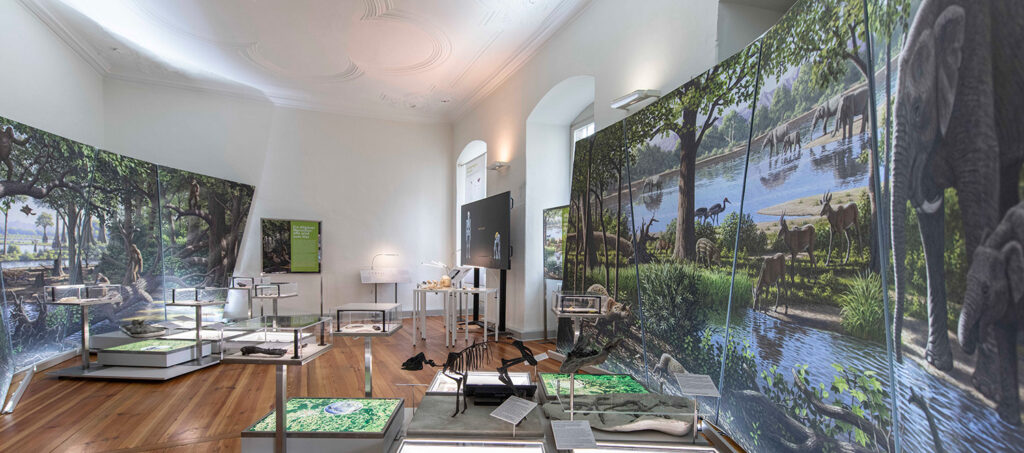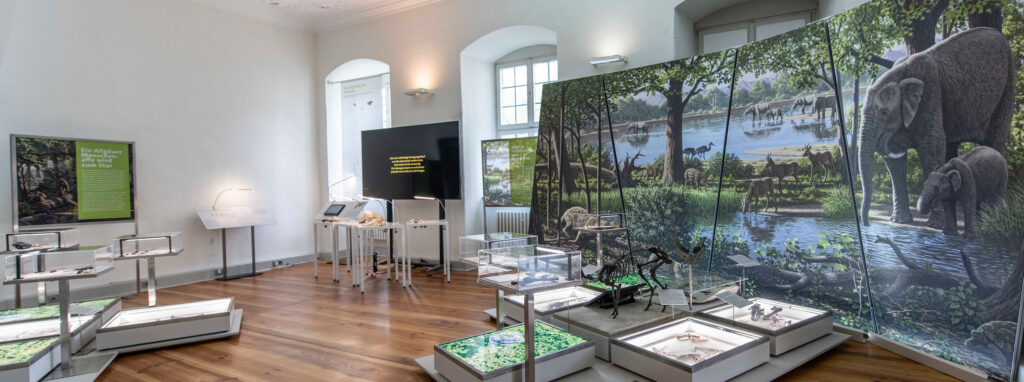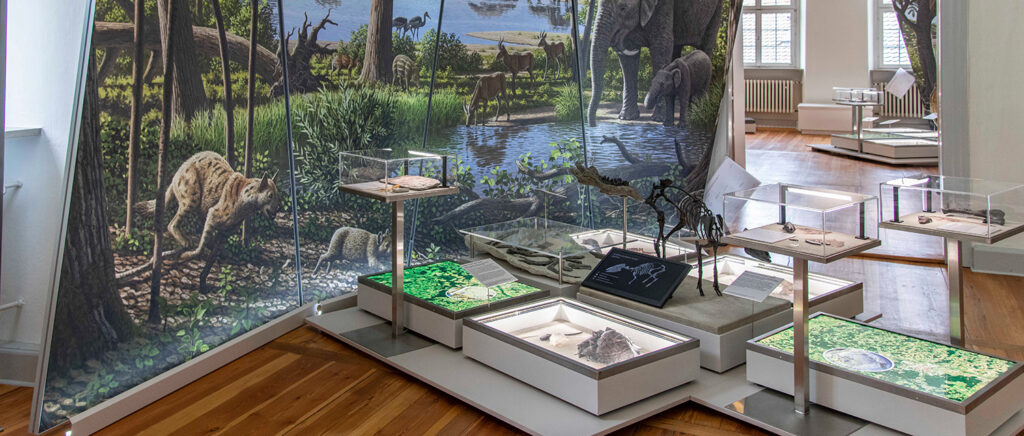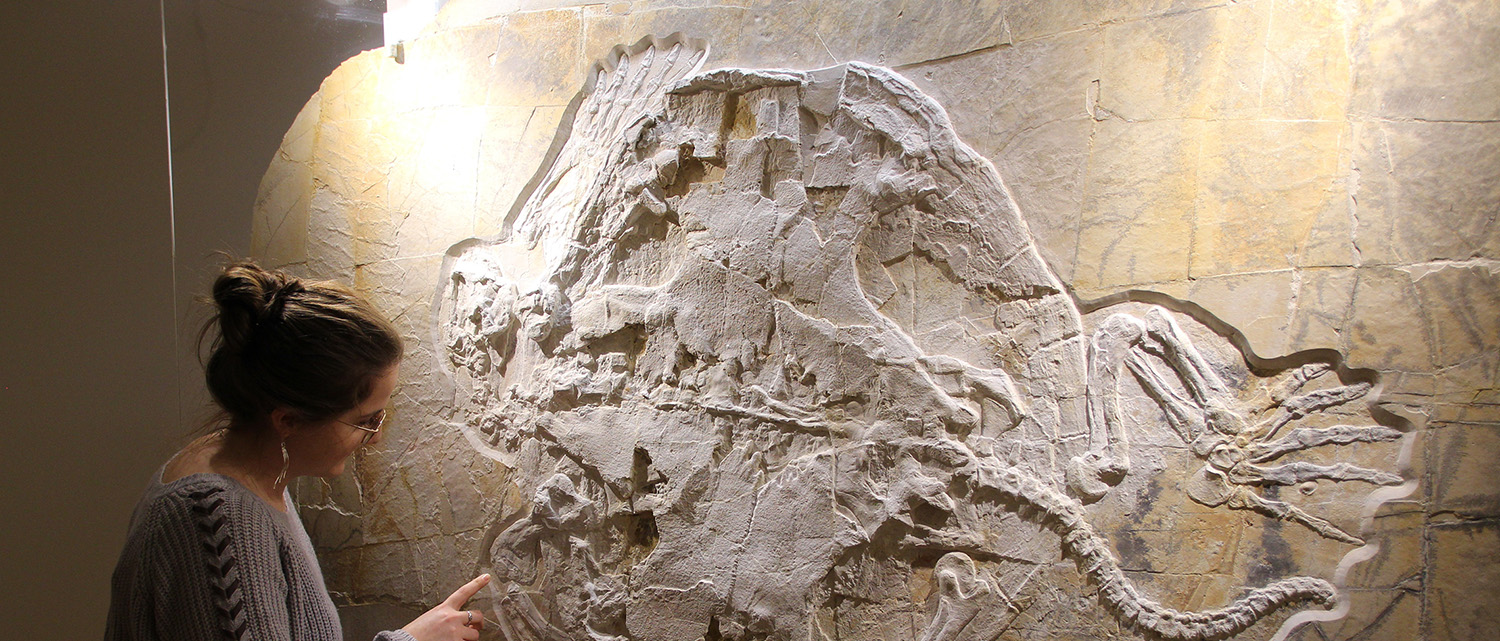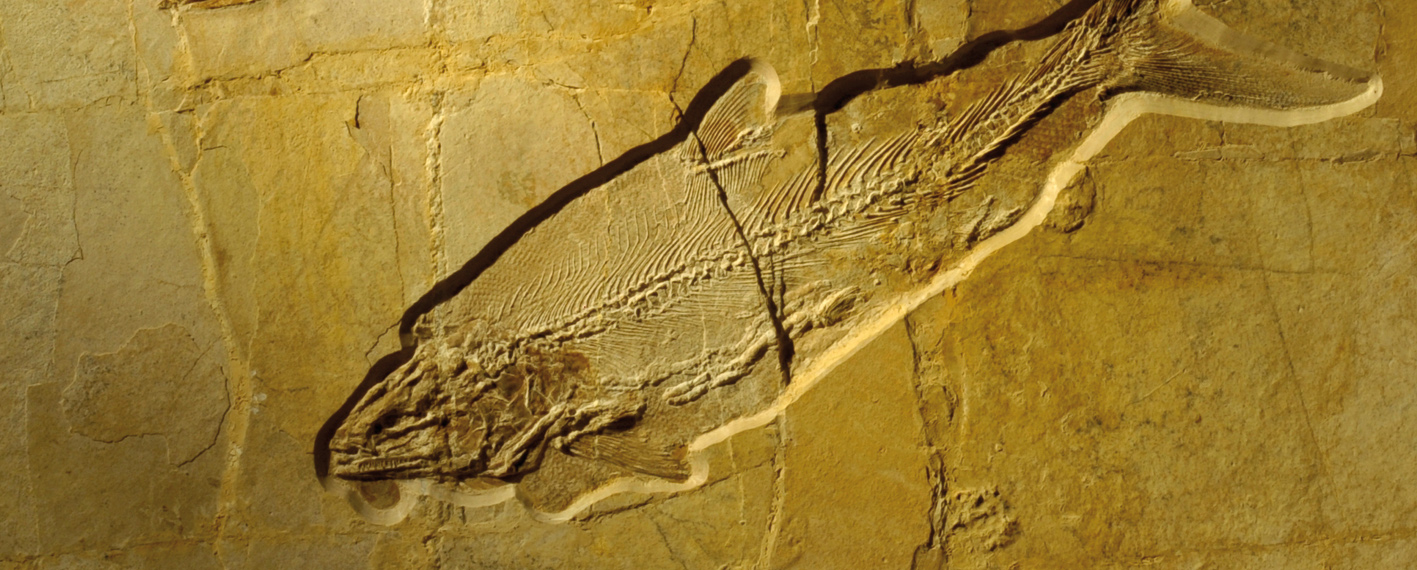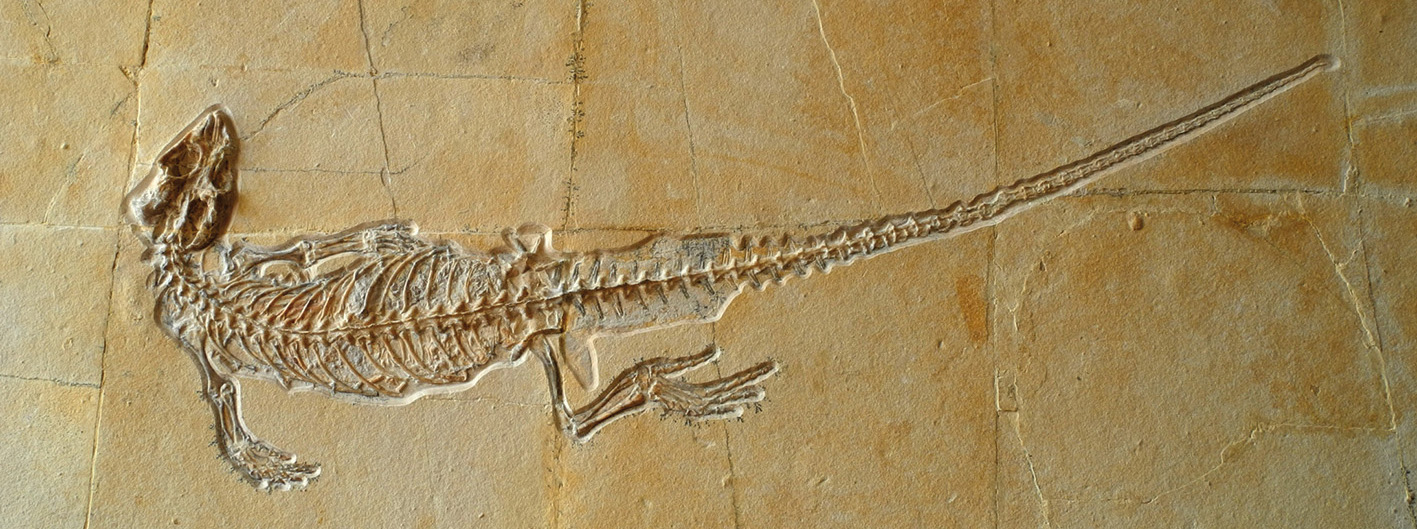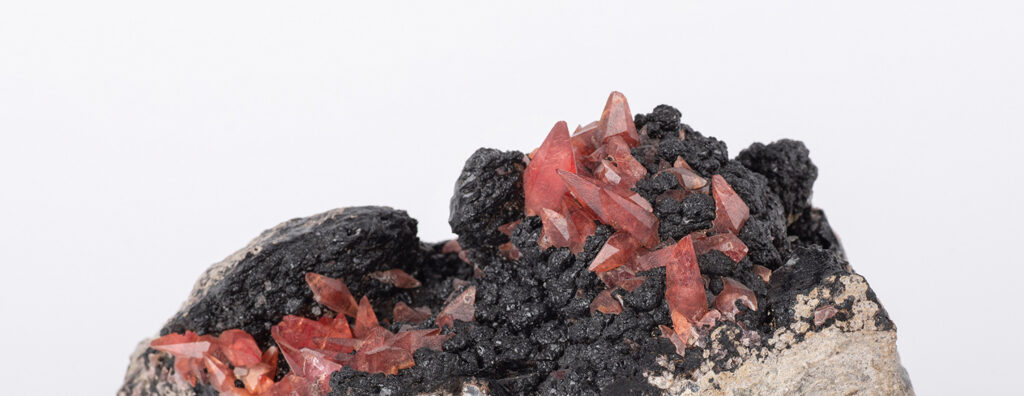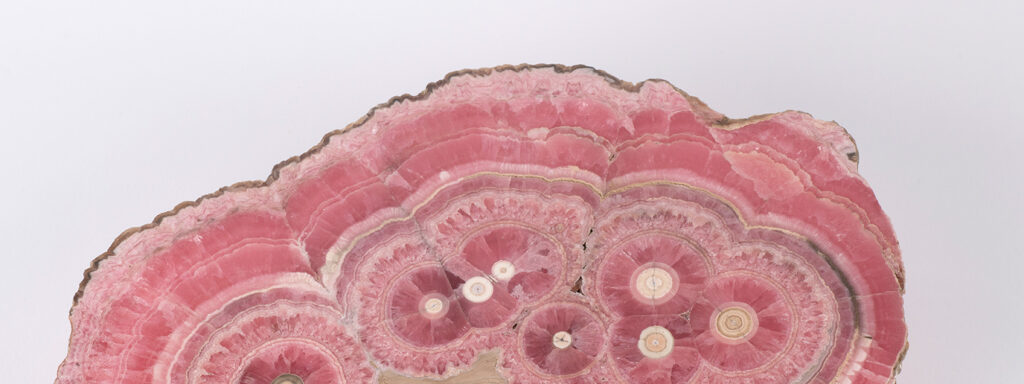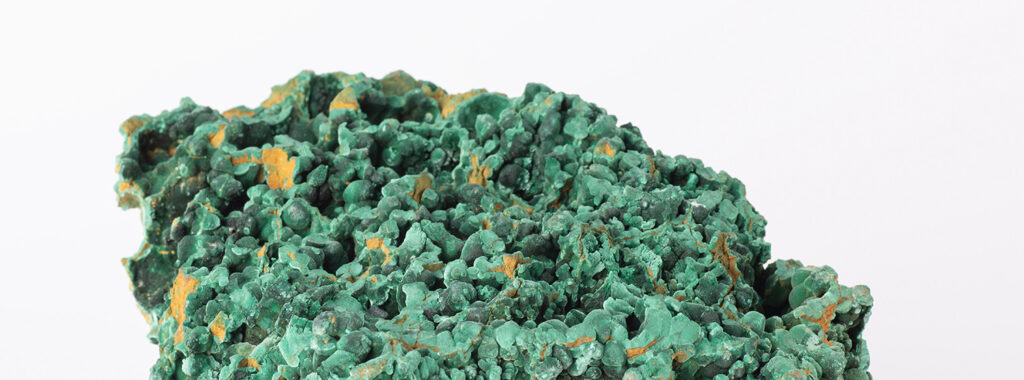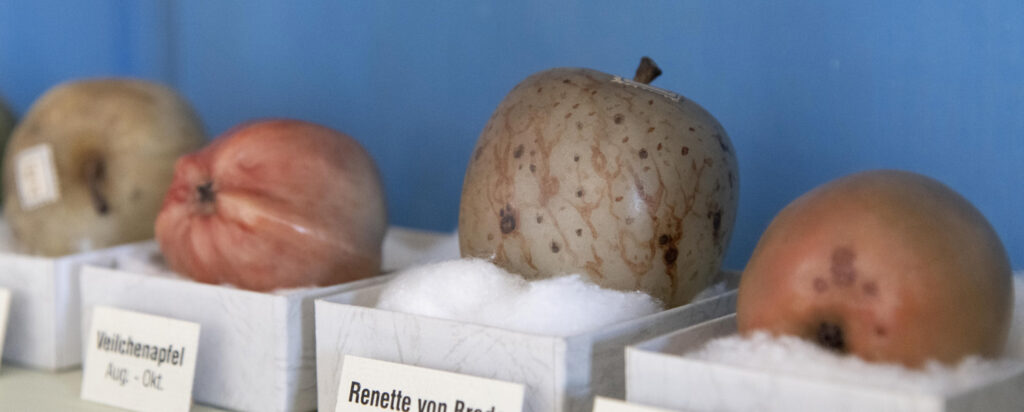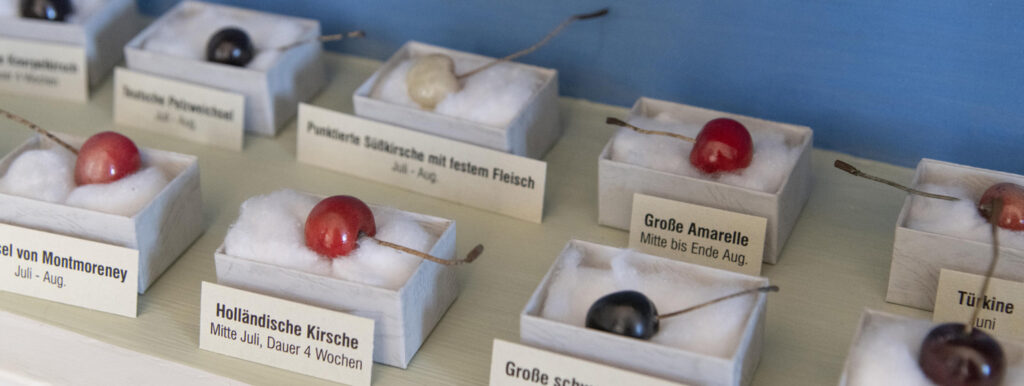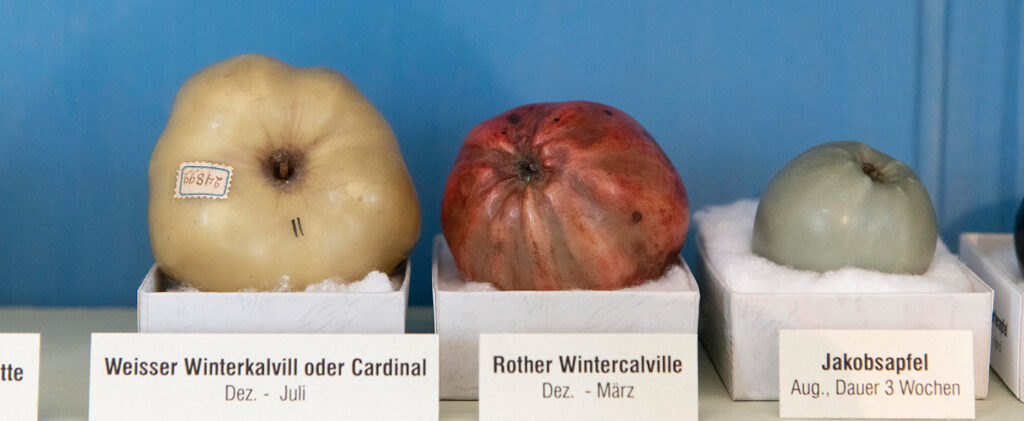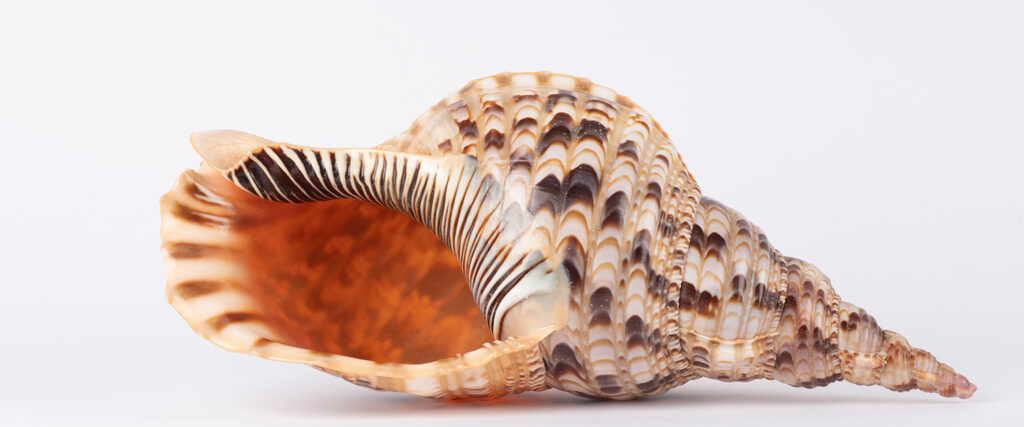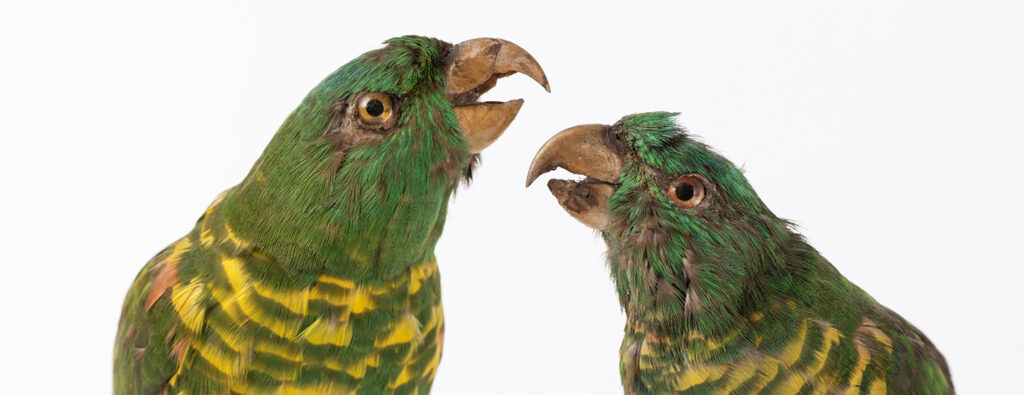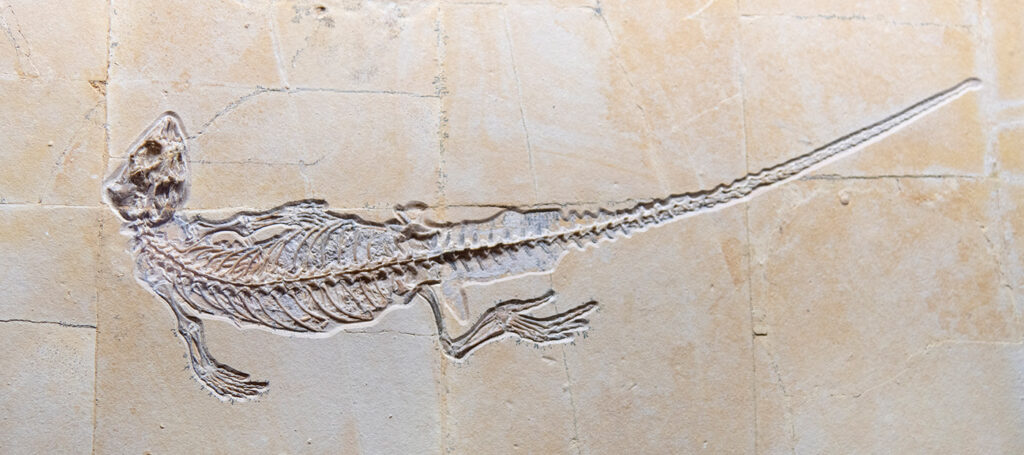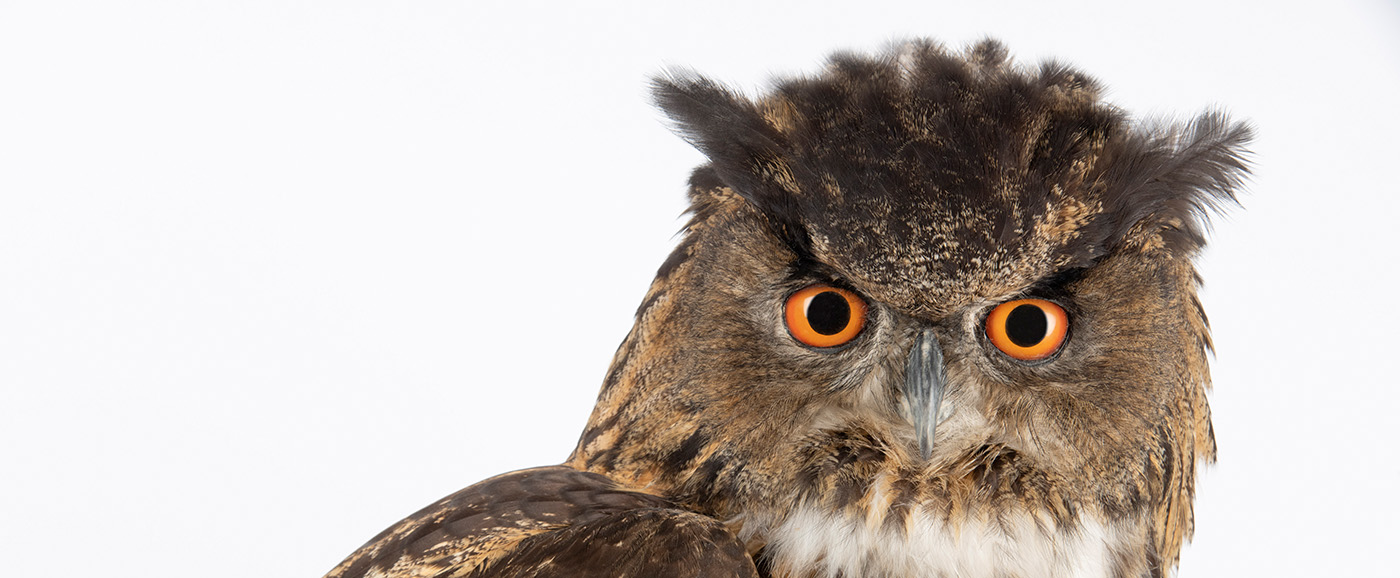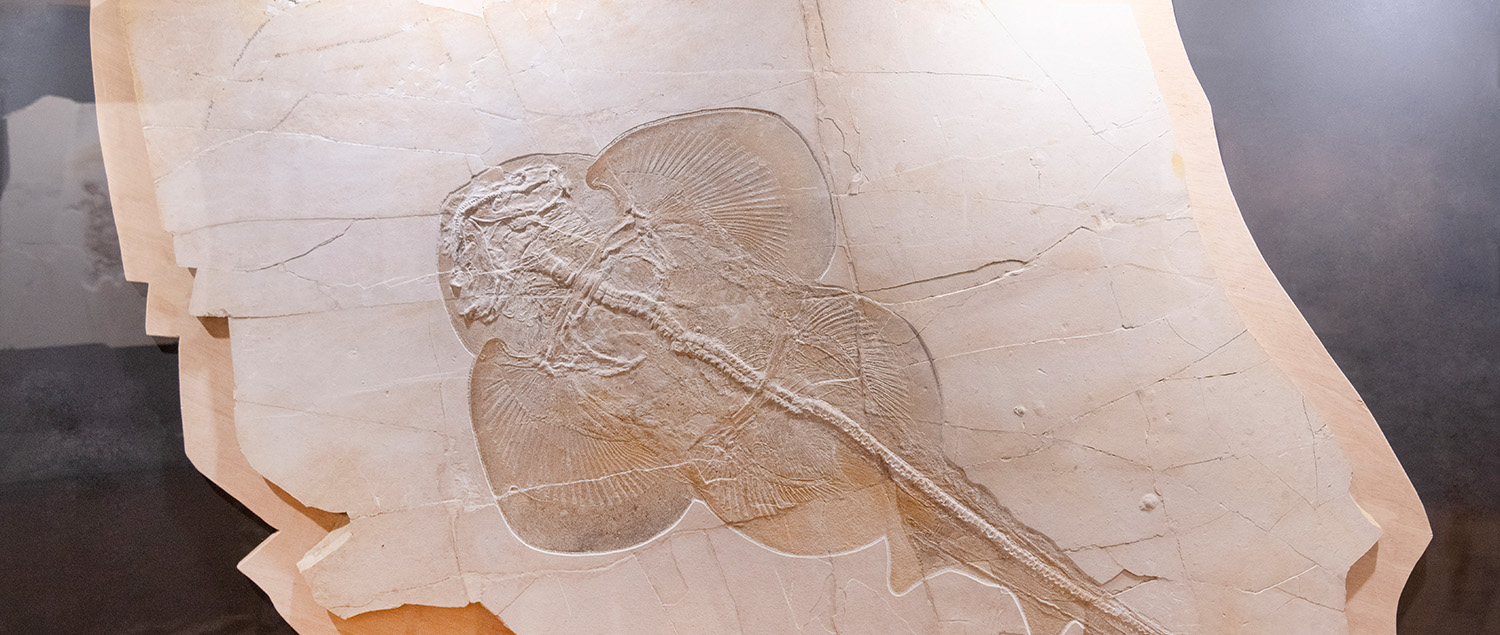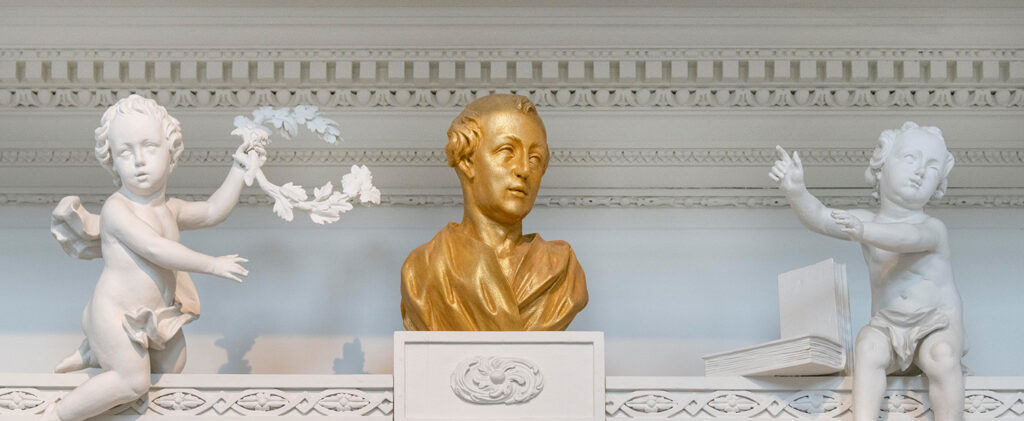Review: So much more than just T. rex!
20. January 2023 – 30. June 2023
The Bamberg Natural History Museum’s special exhibition ‘SO MUCH MORE THAN JUST T. REX!’ focuses on the palaeoart of artist Joschua Knüppe. Palaeoart is the artistic reconstruction of extinct organisms and ecosystems based on scientific findings. Over many hundreds of millions of years of evolution, the most diverse life forms have emerged and disappeared again on our planet. The public only knows a tiny fraction of them.
In this exhibition, Joschua Knüppe, born in 1992, shows a selection of his visually impressive works that span the entire history of the earth, ranging from the earliest life forms to well-known and lesser-known dinosaurs and the giants of the last ice age. The works on display include traditional drawings and paintings on paper as well as digital images, graphics and animations. The result is a plausible picture of prehistoric times beyond the mainstream, with countless facets that not only Hollywood but also the relevant specialist literature does not normally offer us.
Despite their often bizarre appearance from today’s perspective, extinct animals were more than just monsters. Knüppe’s works show, for example, that many of them were not only hunters or hunted, but also caring parents. Even back then, animals behaved clumsily or playfully, they contracted diseases or fought for their survival in disasters. In short, prehistoric times were much more than just T. rex, and even the Tyrannosaurus was so much more than what pop culture tells us.
